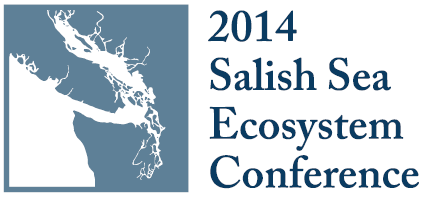About the Salish Sea Currents series
Last spring, the Salish Sea Ecosystem Conference in Seattle brought together more than a thousand of the region's leading scientists and managers with one clear goal: To better understand the state of the ecosystem and to look to the future. It was the premier showcase for the science driving Salish Sea recovery, and a rare opportunity.
In all, more than 450 science talks covered a dizzying array of topics, from the latest salmon research to new developments in ocean acidification. The Salish Sea Currents series will present some of the highlights.
The UW Puget Sound Institute, with support from the EPA and in collaboration with the Puget Sound Partnership assembled a team of 11 science writers to document key conference sessions. These writers worked closely with the Encyclopedia of Puget Sound editorial board to provide the most accurate and timely information, and to place it into the context of other work going on in the region.
Even with 11 writers on the ground, we couldn’t see every presentation or poster, but that wasn’t our goal. The conference organizers have prepared a complete proceeding of abstracts and summaries, but we will tell some of the stories. We’ll look beyond the spreadsheets and the graphs, beyond the darkened conference rooms and PowerPoint presentations.
This month, Eric Wagner kicks off the series with a story on the region's declining seabird populations. Close to a third of the birds in the Salish Sea are classified as species of concern, and some scientists believe this may hold clues to the overall health of the ecosystem. Later, in August, we'll have reports on why so many of Puget Sound's salmon are dying young, as well as a look at current efforts to restore the region's eelgrass. Each month through December, we'll bring you new stories, along with related media and interviews with leading scientists.
We think Salish Sea Currents will be a must-read for anyone who attended the conference, and for those who simply want to know where the latest research is heading. These are your stories. We hope you enjoy them and we would love to hear your feedback.


